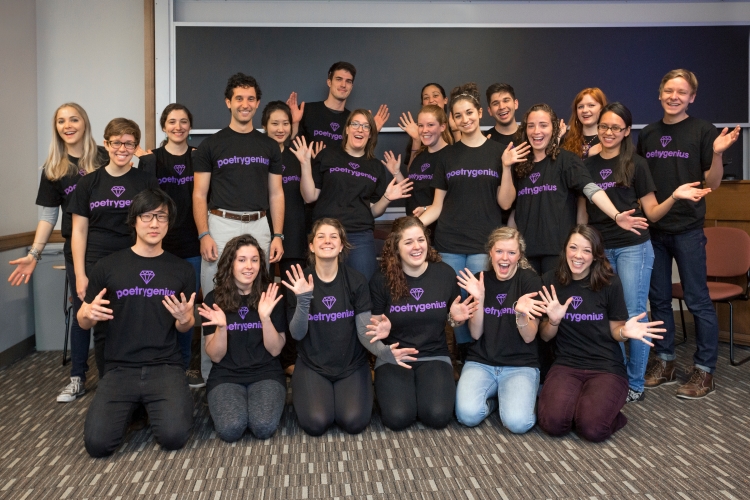
By
The works of poet Geoffrey Chaucer, widely considered the greatest English poet of the Middle Ages, got a 21st-century spin by students recently in a class on the Father of English literature taught by Assistant Professor of English Eric Weiskott.
Using the “Lit” category on the “Genius.com” website — which Weiskott describes as “a large digital collection of lyrics and texts that can be annotated with text, images, and video in real time” — his students were assigned to each contribute 10 annotations to the site’s texts of Chaucer’s masterpiece The Canterbury Tales, the central work in his Chaucer course.
Weiskott brought the students’ work to the attention of Genius.com’s director of education, who was so impressed that he “generously offered to send us T-shirts,” Weiskott said, which were distributed in a recent class.
Blending up-to-the-minute technology with centuries-old literary material is a hallmark of Weiskott, a new arrival at Boston College this year. Earlier in the semester, he had his students use a Yale University manuscript viewer to compare images of medieval manuscripts of The Canterbury Tales. In another example of his work in digital humanities, he cites his experience as a graduate assistant at Yale — where he received his PhD in English last spring — on a research project “Digitally Enabled Scholarship with Medieval Manuscripts,” which uses digital imaging to uncover subtle differences in ink color in medieval manuscripts.
“Digital technology can help students gain an understanding of medieval literary culture by drawing on modern cultural knowledge to illuminate medieval cultural practices,” said Weiskott.
Rachel Aldrich ’16, an English major pursuing a concentration in creative writing and a minor in American Studies, endorses Weiskott’s form of technology-aided pedagogy.
“This assignment really helped me understand how one of the oldest English language literary texts is still alive and vibrant in the literary community,” she said.
Digital annotation on Genius.com “is not so different from some of the ways that books got used in the Middle Ages, a time when professional scribes added handwritten annotations or ‘glosses’ to important texts,” Weiskott explained. It enables students “to put their new knowledge about medieval literature to use and publish it in a durable digital format.”
He is proud of the students’ work: “Their annotations reflect the knowledge about Chaucer that they have developed thus far in the semester. They also had a good sense of humor about the anachronism of digitally annotating a medieval text. Genius.com encourages users to include images and videos in annotations, and my students took full advantage of that feature. I think they enjoyed the assignment.”
Aldrich welcomed the opportunity to “add to the vast wealth of knowledge surrounding The Canterbury Tales with every annotation I posted, even if the points I brought up weren’t necessarily groundbreaking. It was exciting to go back to the classroom knowing that there are communities like the one on the Genius website where contemporary people are actively engaging with the text, rather than just dryly reading it in a scholarly setting.”



